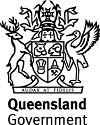Published Wednesday, 03 April, 2019 at 09:59 AM

JOINT STATEMENT
Premier and Minister for Trade
The Honourable Annastacia Palaszczuk
Minister for State Development, Manufacturing, Infrastructure and Planning
The Honourable Cameron Dick
Central Queensland Bushfires Recovery Plan
The recovery plan to support Central Queensland communities recover, reconnect and rebuild following the bushfires of 2018 has been released.
Premier Annastacia Palaszczuk said the Central Queensland Bushfires Recovery Plan 2018 – 2021 mapped the road ahead for Queensland communities to ensure there was a coordinated approach to long-term recovery.
“Never before has this state faced catastrophic bushfires like those that impacted Central Queensland communities in November and December last year,” Ms Palaszczuk said.
“1.4 million hectares of land burned statewide during our bushfire crisis, with 4200 firefighters and 59 aircraft using 12 million litres of suppressants to battle the disaster.
“This was a traumatic time for all those involved. One young man lost his life, thousands of residents were evacuated, homes were lost and there was incredible damage to crops, pasture, water infrastructure, sheds and machinery.
“While our attention has recently turned to the devastation of the floods in north and north west Queensland, our commitment to the eight most bushfire impacted communities of Central Queensland has never wavered.
“I’d like to thank State Recovery Coordinator Major General Stuart Smith (retired) for his work assisting communities in their long-term recovery and his work putting the Recovery Plan together.”
Minister for State Development, Manufacturing, Infrastructure and Planning Cameron Dick said the Bushfire Recovery Plan provided the blueprint for a coordinated, locally-led approach to recovery.
“The challenge for these communities is that their recovery will not simply be measured in dollars, or bridges, or infrastructure rebuilt, but rather how people reconnect, reunite, and move forward,” Mr Dick said.
“Already, this Recovery Plan has empowered communities to identify their own priorities and choose individualised recovery solutions to meet their own circumstances.
“Queensland Government agencies, industry and community groups will all play a role supporting councils to ensure they not only recover but are stronger and more resilient,” he said.
Major General Smith said he had been amazed by the strength and resilience of the many people he met during visits to the fire affected areas.
“This Plan acknowledges that the breadth and intensity of these fires represented a unique threat to communities while also recognising that many of the impacted communities are still recovering from disaster events such as Severe Tropical Cyclone Debbie in early 2017, floods in late 2017 and drought in 2018,” he said.
“The Recovery Plan focuses on the health and wellbeing of those impacted as well as restoring local economies and the natural environment, with an emphasis on making these communities more resilient against future disaster events.
“I will continue working with the Queensland Reconstruction Authority, state agencies, councils, local stakeholders and impacted communities to ensure the best possible recovery for our communities impacted by recent disasters,” he said.
State Recovery Coordinator Major General Smith was appointed by the Premier on 9 December 2018 to assist bushfire impacted communities in their long-term recovery and extended on 8 February 2019 to included communities impacted by the floods.
Fast facts:
- 1250 fires statewide (22 Nov – 6 Dec 2018)
- 1.4m hectares of land burned statewide (Incl 140,000ha national parks and state forest)
- 4202 firefighters (incl 1202 from interstate)
- 59 aircraft utilised (47 airborne at the peak)
- 12 million litres of suppressant used
- 571 community bushfire warning messages
- 1 million devices reached with over 50 emergency alerts
- 71 early childhood centres and schools closed
- More than $1.8m in Emergency Hardship Assistance grants paid to 10,393 residents
- 479 damage assessments in 35 impacted localities across 8 LGAs
- 9 dwellings destroyed, 17 dwellings damaged
- 27 sheds destroyed, 72 sheds and other structures damaged
- 28 vehicles and multiple machinery and equipment damaged
- 700 hectares of sugarcane crop and 40 hectares of banana crop destroyed
The Central Queensland Bushfires Recovery Plan 2018 – 2021 can be viewed online at https://www.qra.qld.gov.au/our-work-recovery/state-recovery-plans
ENDS
Media contact:
Zoe Russell (Premier’s Office) – 0439 982 347
Lesley Major (Minister Dick’s Office) – 0419 288 284

